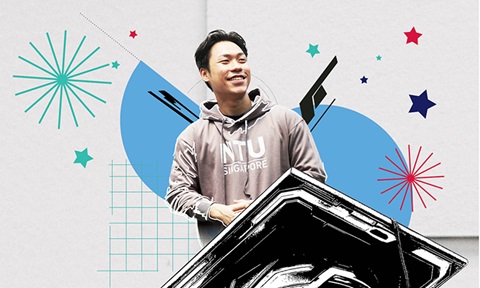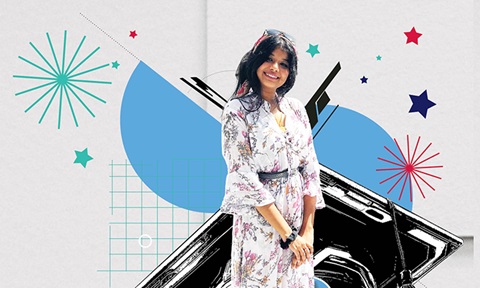Gen AI showdown: Which AI rules them all?
HEY! writer Lester Kok tests six popular Gen AI tools to see which ones are best for research, writing, image creation, resume help and more
by Lester Kok
Many free Gen AI tools today let you access their best models, though most have usage limits – like how many times you can use them each day. But not all AI tools are good at the same things. So, which ones are actually useful for student life? We tested several options and rated them based on what they do best (as of April 2025). All are free to use, making them ideal for students on a budget.
The contenders:
1. ChatGPT by OpenAI
2. Grok by X
3. Gemini by Google
4. Copilot by Microsoft
5. Perplexity
6. DeepSeek by High Flyer
Coding: ChatGPT
Research and studying: Gemini
Need help breaking down a tough topic or writing a paper? Gemini takes the lead. It connects to the Google ecosystem and scans hundreds of sources to give you solid, well-rounded answers.
ChatGPT comes in second. It’s clear and reliable, and it gives citations. Perplexity ranks third, with live web searches and clickable links.
All three offer “deep search” options – meaning they can go beyond surface-level summaries to provide detailed, context-rich answers to academic or scientific questions. DeepSeek is also helpful for pointing out gaps in your knowledge. Grok, on the other hand, tends to struggle to go deep and may base its responses on incomplete information.
Travel planning: Grok
Planning a semester-long exchange or a short trip? Grok is your go-to. It searches the web and gives you practical details – like travel time, estimated costs, what apps to download, and even what to wear based on the weather. Perplexity comes next. It curates travel ideas, suggests destinations and delivers a sample itinerary. The others? They mostly list top attractions and offer a basic itinerary without much depth.

Image generated by Gemini

Image generated by ChatGPT
Creative writing: ChatGPT
ChatGPT is the most versatile tool for creative writing. Whether you want it to mimic your favourite author, act like a news editor, or roleplay as a character, it does it all. However, it has a habit of using em dashes (—) , which may be a dead giveaway that something is written by AI.
Grok and DeepSeek tie for second. Both can easily take on fun personas, from a sassy sidekick to a wise old monk, adding flair and flavour to your writing. But beware the over-the-top vibe when your prompt asks for a fun take – as you’ll see in the examples below.
Excerpts showing the writing style of the top three tools:
Prompt used:
Help me rewrite the following in your usual tone of voice but with a fun take.
Pause and unwind at Yunnan Garden, where serenity flows with sustainability. Home to a 5.6m man-made waterfall that nourishes the garden’s lush greenery and wildlife, it’s the perfect retreat after a long day of classes. If you’re lucky, you might catch nature at its finest – a sea of cotton ripples across the sky, or a brown-throated sunbird flitting through the trees.
Tucked right on campus, this peaceful green gem comes with its own 5.6-metre waterfall — yes, a legit man-made one — that keeps the place fresh and full of life. Think chill vibes, cool shade, and loads of Insta-worthy moments.
Perfect for when your brain’s fried after back-to-back lectures. Sit by the water, soak in the calm, and if the universe is feeling generous, you might just spot a fluffy cloud parade overhead or a sunbird showing off its moves in the trees.
Study break sorted.
Yo, kick back and chill at Yunnan Garden, where zen vibes and eco-coolness collide! Picture this: a 5.6m man-made waterfall splashing life into a jungle of green and happy critters. It’s your go-to spot to decompress after slogging through classes. Keep your eyes peeled—you might spot a cotton-candy sky or a brown-throated sunbird zipping around like it owns the place. Pure nature, pure vibes!
Need a break from cramming and chaos? Slip into Yunnan Garden—where zen vibes meet eco-friendly swag. The MVP here? A 5.6m waterfall that’s basically nature’s hydration station, keeping everything lush and Insta-worthy.
Stroll around and you might hit the jackpot: skies doing their best cotton candy impression, or a flashy sunbird pulling off aerial acrobatics between the trees.
Building your CV or resume: Grok
AI is a great tool to level up your resume. Just enter your background, education, awards and experience, and Grok will generate a personalised CV tailored to job requirements.
It also tells you where your strengths lie, what skills you’re missing, and even suggests how to prepare for interviews. It can create mock interview questions and offer you strategies to prepare your answers.
ChatGPT takes a solid second place, with helpful advice on next steps. The rest of the AI tools are decent, but they tend to be less detailed.
Image generation: Gemini
Gemini produces the most photorealistic images, with lifelike faces and subtle details like hand gestures and facial expressions. It even nails elements like eye contact and lighting. It works faster than ChatGPT, if server traffic isn’t too heavy.
ChatGPT is also strong – it handles settings like The Hive well, but can slip up on finer details, such as laptops with missing screens or students who look older than expected. Grok often struggles with generating realistic faces and hands, while Copilot’s images look quite obviously AI-generated.
For illustrations, ChatGPT is the most consistent. It can mimic styles like Ghibli or anime with ease, making it a reliable choice for stylised visuals. Gemini’s visuals look beautiful, but it often mangles text in images, so posters and banners may end up with unreadable or misspelt words.

Image generated by Gemini

Image generated by Grok

Image generated by ChatGPT

Image generated by Copilot
Perplexity and DeepSeek cannot generate images.
Prompt used:
Generate a realistic image of a group of happy 20-year-old Asian students on the Nanyang Technological University (NTU) campus in Singapore. They are sitting outdoors in a modern, green campus environment, using their laptops, chatting and drinking bubble tea. The background features NTU’s iconic architecture, such as Gaia with its timber façade or The Hive with its unique, rounded towers. The students are casually dressed, smiling and enjoying a sunny day, surrounded by lush greenery and contemporary university buildings.
OVERALL WINNER: ChatGPT
ChatGPT takes the top spot for being the most versatile of them all. It handles everything I throw at it without much fuss. Whether I need help turning my words into poetry, diving deep into a research topic, or generating an image from scratch, ChatGPT consistently delivers at the standard I expect. However, the use of the em dash can be annoying and I often have to tell it not to use it.
Gemini’s the runner-up in this AI battle, thanks to its in-depth analysis, wide web reach, and handy Canvas – an interactive workspace that lets you write, edit and code while chatting with the AI side by side. It also generates visuals with impressive detail.
Grok lands in third place with its colourful tone and strong support for CVs and cover letters – especially useful for students preparing to enter the job market.
DeepSeek and Perplexity can’t generate graphics at all, though Perplexity is very good for web searches and research. Copilot performs decently across most tasks, but nothing really stands out – and its image generation is quite weak.
This story was published in the Mar-Apr 2025 issue of HEY!. To read it and other stories from this issue in print, click here.




/inarah-farahah-ntu.tmb-listing.jpg?Culture=en&sfvrsn=f30935ed_1)


